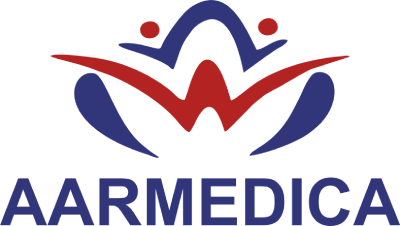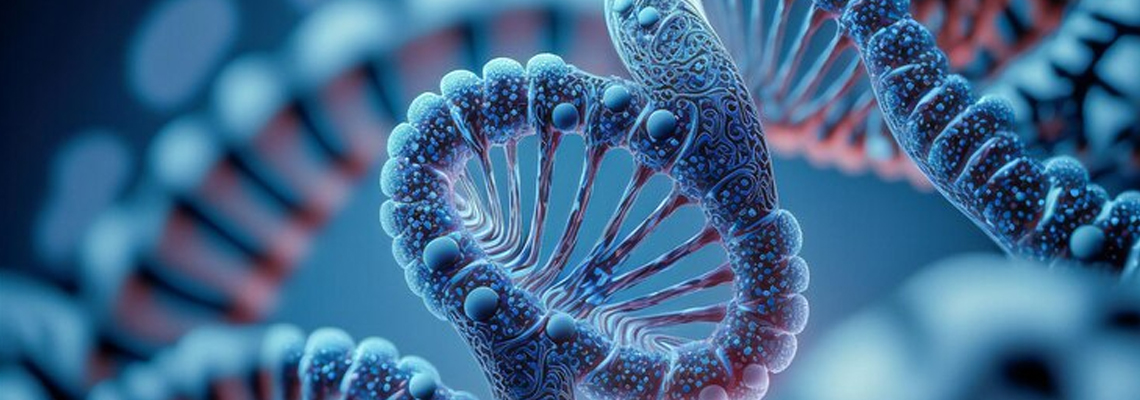Cholesterol esterase is not only a lab tool but also a part of natural body processes. It supports the control of fat levels and works in the digestion of foods with fat. In clinical testing, it helps measure cholesterol levels, which guide health treatment.
What is Cholesterol Esterase?
Cholesterol esterase is an enzyme that splits cholesterol esters. These esters are forms of cholesterol stored in the body and in food. Breaking them down is needed for the body to use cholesterol in cell membranes and hormones. Without this enzyme, cholesterol balance in blood and tissues would be harder to manage.
Doctors and labs use cholesterol esterase in diagnostic tests. By mixing samples with this enzyme, they can measure cholesterol levels more easily. Research shows that high cholesterol levels increase the risk of heart disease NIH source. So this enzyme plays a part in both science and daily health care.
Structure of Cholesterol Esterase
The enzyme has a protein structure shaped for its task. Like other enzymes, it is made of amino acids folded into chains. The fold makes a pocket where the reaction takes place. This site is called the active site. Here, cholesterol esters meet water molecules and are split into free cholesterol and fatty acids.
Studies show cholesterol esterase belongs to the lipase family NCBI source. These enzymes share similar protein folds. The structure is stable under normal body heat and pH levels. This allows it to work well inside the digestive tract and also in test kits designed for lab use.
Function of Cholesterol Esterase
The main role of cholesterol esterase is to hydrolyze cholesterol esters. This means adding water to break ester bonds. The result is free cholesterol and fatty acids. Both are needed for body use. Free cholesterol is vital for making hormones, vitamin D, and bile acids. Fatty acids are used for energy.
In medical use, cholesterol esterase helps detect cholesterol in blood samples. When combined with other enzymes like cholesterol oxidase, it gives measurable signals. These are then read by machines or strips to check cholesterol levels. This simple reaction has become a base for many cholesterol tests around the world.
Role of Cholesterol Esterase in Metabolism
Cholesterol esterase plays a big role in fat balance. In the small intestine, it helps digest fats from food. Bile salts mix with fat and make droplets. Cholesterol esterase then acts on these droplets, releasing free cholesterol that the body can absorb. Without this step, fat digestion would be incomplete.
In the body, the enzyme also controls storage and release of cholesterol. Free cholesterol is needed for membranes and steroid hormones. Too much free cholesterol may cause plaques in arteries. The enzyme helps regulate these levels by breaking down stored esters at the right time CDC source.
Cholesterol Esterase in Research
Research on cholesterol esterase is wide. Scientists study it to learn how fat digestion happens and how to design better drugs for high cholesterol. The enzyme is also used in making lab kits that can quickly measure cholesterol in samples. These kits are vital in hospitals and home testing devices.
In labs, cholesterol esterase is paired with sensors. When it breaks down cholesterol esters, the products can be measured by light or color change. These sensors help track cholesterol in blood, milk, or food samples. This helps food safety labs check fat levels in dairy products or processed foods.
Clinical Role of Cholesterol Esterase
Cholesterol Esterase and Human Health
Cholesterol esterase is linked to human health because it helps measure cholesterol levels. High cholesterol is a risk factor for stroke and heart attack. Tests using this enzyme allow doctors to guide patients on diet, exercise, or medicines. Reliable tests save lives by warning people before disease becomes severe.
In some cases, cholesterol esterase also helps monitor how drugs lower cholesterol. By checking blood samples, doctors can see if treatment is working. This helps patients adjust doses or change medicine when needed. The enzyme is thus part of daily medical practice.
Role in Enzyme Pathways
Cholesterol esterase works with other enzymes in fat digestion. Lipases break down triglycerides into fatty acids. Cholesterol esterase focuses on esters of cholesterol. Together, they make sure fats are absorbed well in the gut. In lab tests, cholesterol esterase is paired with cholesterol oxidase and peroxidase to give measurable results.
These enzyme pathways form the base of many medical kits. Each step in the chain adds to the signal read by devices. Without cholesterol esterase, these pathways would miss the first step of freeing cholesterol from esters. This makes it a vital enzyme in clinical use.
Sources of Cholesterol Esterase
Natural Sources
Cholesterol esterase is found in the pancreas of animals. It is secreted into the small intestine during digestion. It is also present in humans where it supports fat digestion and absorption. Natural sources of the enzyme are important for studies in metabolism and nutrition.
Laboratory Production
For medical and research use, cholesterol esterase is produced in labs. Microbes like bacteria or fungi can be engineered to produce it. The enzyme is then purified for use in test kits. This method provides stable supply without depending only on animal sources. It also allows higher purity and consistency.
Cholesterol Esterase in Diagnostic Use
Use in Test Kits
Cholesterol esterase is a part of many diagnostic kits. It helps measure cholesterol in blood, serum, or food samples. In these kits, the enzyme breaks cholesterol esters, freeing cholesterol for further detection steps. Results are shown as color changes that can be read by machines or strips.
These kits are widely used in hospitals, clinics, and labs. Doctors rely on them to decide treatment for patients with high cholesterol. Home kits also use cholesterol esterase, making health checks easier for people outside clinics.
Use in Biosensors
Biosensors use cholesterol esterase to detect cholesterol levels in real time. The enzyme reacts with cholesterol esters and produces measurable signals. These signals can be electric, optical, or chemical. Biosensors are fast, sensitive, and require very small samples. They are used in hospitals, food labs, and research centers.
Biosensors with cholesterol esterase are being tested for wearable health devices. These could one day help people track cholesterol at home, much like glucose monitors for diabetes. Research in this field is growing fast and may improve preventive health care.
Storage and Stability of Cholesterol Esterase
Cholesterol esterase must be stored carefully to keep its activity. The enzyme is usually kept in cool, dry conditions, often frozen. In liquid form, stabilizers are added to keep it active. Heat and light can damage the enzyme, so proper packaging is needed.
In commercial kits, cholesterol esterase is dried or freeze-dried. This increases shelf life and makes transport easier. Stable storage is important because medical tests depend on accurate enzyme activity. Poor storage can lead to false results and wrong medical advice.
Future Scope of Cholesterol Esterase Research
Future research on cholesterol esterase will focus on health and technology. Scientists are working to design better biosensors that use the enzyme. These could help detect cholesterol faster and with higher accuracy. This can support early treatment of heart and metabolic diseases.
Another scope is drug development. By studying how cholesterol esterase works, researchers may design drugs that block or control its activity. This could help patients with cholesterol disorders. Food science is another area where the enzyme may be used to study fat levels in products.
Role of Cholesterol Esterase in Different Fields
| Field |
Role of Cholesterol Esterase |
| Digestion |
Breaks cholesterol esters in food for absorption |
| Medical Diagnostics |
Used in test kits to measure cholesterol in blood |
| Research |
Helps study fat balance and enzyme pathways |
| Food Testing |
Measures fat and cholesterol in dairy and processed foods |
| Biosensors |
Detects cholesterol levels in real time |
Cholesterol esterase is a key enzyme for digestion, medical tests, and research. It helps break down cholesterol esters and allows labs to check cholesterol in blood or food. With growing health concerns around fat and heart disease, this enzyme will remain important in science and medicine.
For more details or to source cholesterol esterase for research or diagnostics, contact AARMEDICA today.
Frequently Asked Questions on Cholesterol Esterase
1. What is cholesterol esterase used for?
Cholesterol esterase is used to break down cholesterol esters into free cholesterol and fatty acids. It is used in medical tests, lab research, and food analysis. In health care, it helps doctors check cholesterol levels, which guide treatment of heart and fat-related diseases.
2. Where is cholesterol esterase found in the body?
Cholesterol esterase is made in the pancreas and released into the small intestine. There it helps digest fats and cholesterol from food. The enzyme is also found in other tissues where it helps regulate cholesterol storage and release. This makes it important for metabolism.
3. Why is cholesterol esterase important in medical tests?
Medical tests for cholesterol need cholesterol esterase to break cholesterol esters. Without it, cholesterol would not be available for accurate measurement. The enzyme is paired with other enzymes in kits. This helps detect cholesterol levels in blood samples for clinical use.
4. How is cholesterol esterase produced for lab use?
Cholesterol esterase is produced in labs using microbes. These microbes are designed to make the enzyme. After growth, the enzyme is purified and prepared for use. This method allows stable, clean, and safe supply for research and medical kits.
5. What happens if cholesterol esterase is not working properly?
If cholesterol esterase is not active, fat digestion will be incomplete. Cholesterol esters from food would not be broken down. This can lower absorption of cholesterol needed for hormones and membranes. In tests, inactive enzyme can give wrong cholesterol results.
6. Can cholesterol esterase be used in food testing?
Yes, food labs use cholesterol esterase to measure fat and cholesterol levels in products. Dairy products and processed foods are checked with the enzyme. This helps monitor food quality and safety. It also helps meet health and nutrition standards for labelling.
7. How is cholesterol esterase stored in medical kits?
In kits, cholesterol esterase is stored in freeze-dried form. This makes the enzyme stable for long periods. When needed, it is rehydrated before use. Careful storage is important because enzyme activity decides how accurate test results will be.
8. What is the future of cholesterol esterase research?
Future research will focus on better biosensors and drugs. Biosensors with cholesterol esterase may help people track cholesterol at home. Drug research may look for ways to control the enzyme. Both fields aim to improve prevention and treatment of cholesterol disorders.



